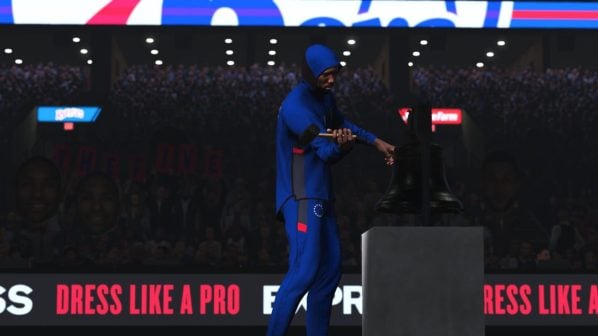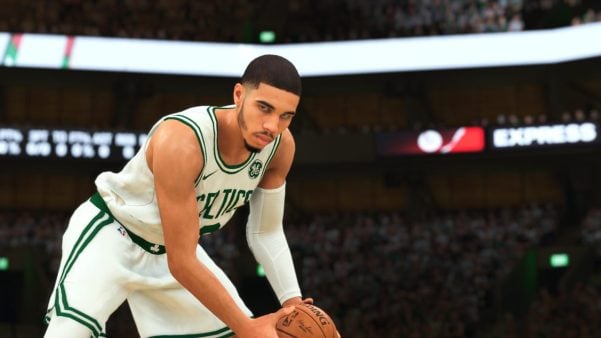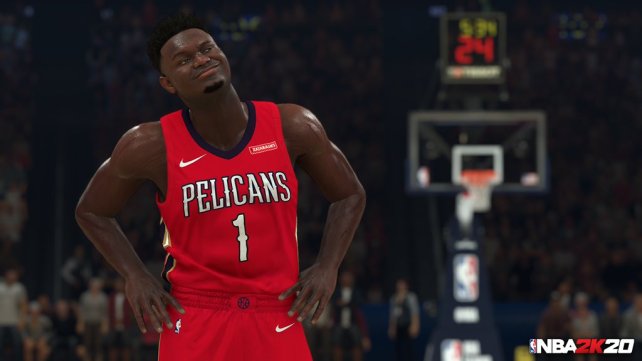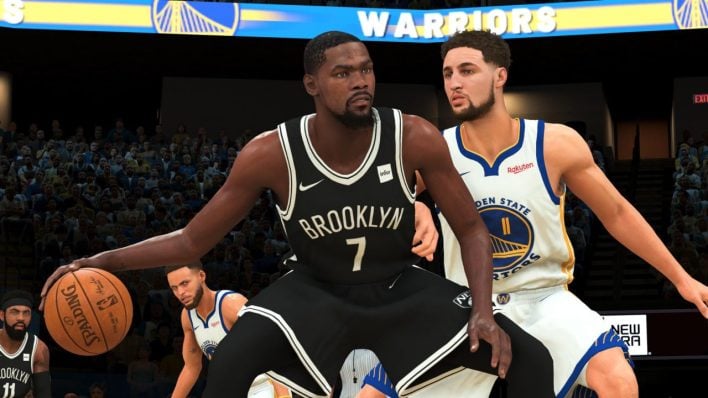Player progression systems in sports games can be hit or miss. I wanted to look at NBA 2K’s franchise mode and break it down in terms of depth, realism, consistency and overall enjoyment. In a world where professional sports leagues are mostly on hold, we here at Operation Sports feel it is our duty to find out if the player progression system in NBA 2K20 really holds up.
So let’s dig into NBA 2K20‘s MyLeague mode.
Depth
2K’s progression system does have some depth to it. Individual player training (a separate menu where you can choose the skills a player works on during off days) is a nice addition to the mode, and putting time into those menus will have an impact on your players. The badge system is a nice addition as as well, although it does seem to reset itself an awful lot. On paper, you are able to have your older players “mentor” younger ones, causing them to pass along certain badges that contain stat boosts and even in some cases, extra animations.
2K also has a much-maligned G League system, which has been discussed at length on this site and by myself specifically. Essentially, managers can assign players to the G League, where they will percolate for a few months and randomly jump up 10 points in overall eventually.
The fact that you have absolutely no hand in the “minor league” systems in 2K is a little bit bothersome. In NHL and MLB The Show, you can play full-on minor league seasons. You could theoretically pretend you’re an AHL or AAA manager, play a decade in either league and never play an NHL or MLB game if you wanted. In 2K, it’s just a random thing that happens.
Grade: C
Realism
Bad. F. Fail. 2/10. 2K’s progression is not realistic at all. About 5-6 seasons in, your entire league is full of ghoulish, create-a-player viking men who bare no resemblance to any living human, but are somehow all over 90 overall. Your Bradley Beal types (the current crop of highly talented stars who are currently at their peak, and capable of leading an NBA team to at least the playoffs) become average players in four or five years. It’s not that they necessarily get much worse. It’s that the baseline of the entire league rises to a ridiculous level. Every team has at least one 90 overall player, and many teams have three or four.
Ten years into a franchise mode with 2K’s draft classes, your MyLeague will be hilariously bad. Not “bad” in terms of skill, but “bad” in terms of common sense. Bad in an “lol, what is this? This is terrible” sort of way. Your league quickly becomes overrun by a bunch of giant dominant dudes with ill-conceived haircuts, all between 90-99 overall.
Grade : F
Consistency
On 2K20, 2K messed with player chemistry effects, which caused the game to be somewhat broken out of the box. Almost every player, including young guns who should obviously improve like Zion, Ja Morant and Luka Doncic, would have the dreaded downward red arrow after the season. This has since largely been evened out via patches, and we have returned to our regularly scheduled league of terrifying white ginger Frankenstein monsters. It might not be great, but hey, it’s at least consistently mediocre.
Grade: B-
Enjoyment Factor
I enjoy 2K’s franchise mode, despite the general tone of this article. I do really respect the work the developers put into it. The mode itself is pretty good, if tragically flawed. The player progression system is an obvious weakness though. When you break it down and look at the current crop of sports games side by side, 2K’s player progression system is, in my opinion, the worst of the major sports games. Quickly:
FIFA – In my limited experience, I prefer FIFA’s player progression system to any other current sports title. Managers select up to five players per week, and can either simulate or play out actual drills that mimic real soccer drills. The player receives a boost in stats based on how well they did in that drill. Straightforward, simple and fun with a strategical element baked-in. That’s all most fans want out of a player progression system.
Madden – Pretty straightforward. You gain XP for each player, and you apply it to improve whatever stat you would like. Madden’s progression can be dry and linear, but at least there is direct correlation between playing time, practice time and growth.
NHL – It seems as though the most important factors for positive development are playing time and winning. If you manage a young team that wins the Stanley Cup, or a young AHL team that wins the Calder Cup (not to be confused with the Calder Trophy, the Rookie of the Year in the NHL, which ironically does not appear to have an effect on development), it seems that the individual players on those winning teams get sizable boosts. However, if you’re not stacking championships, it’s kind of hard to get a star player to reach their max potential. If you’ve drafted someone later than the second round, forget it. I have had a 22-year-old, third-round winger score 55 goals in a season and go from 80 overall to 80 overall. If anything was going to trigger eliteness (there’s no way that’s a word), it would be a 50 goal season as a 22-year-old pro. But I digress. NHL’s progression isn’t bad, it’s just not quite like the good old hockey game, the best game you can name.
MLB – With The Show, at least you can play minor league games and actually cause change in your organization — Toledo Mud Hens 4 lyfe, Toledo Mud Hens 4 evar.
Verdict
If I had to put a grade on it, NBA 2K20‘s current player progression system would finish with a C- or maybe even as low as a D. It’s like a five and a half out of ten. There are some good ideas in place, but the execution leaves a lot to be desired.












Published: Mar 25, 2020 11:30 am